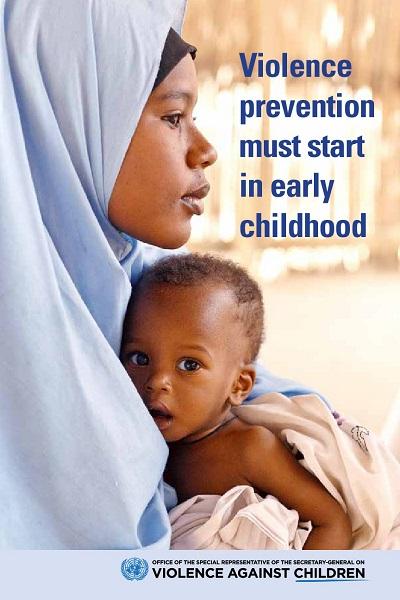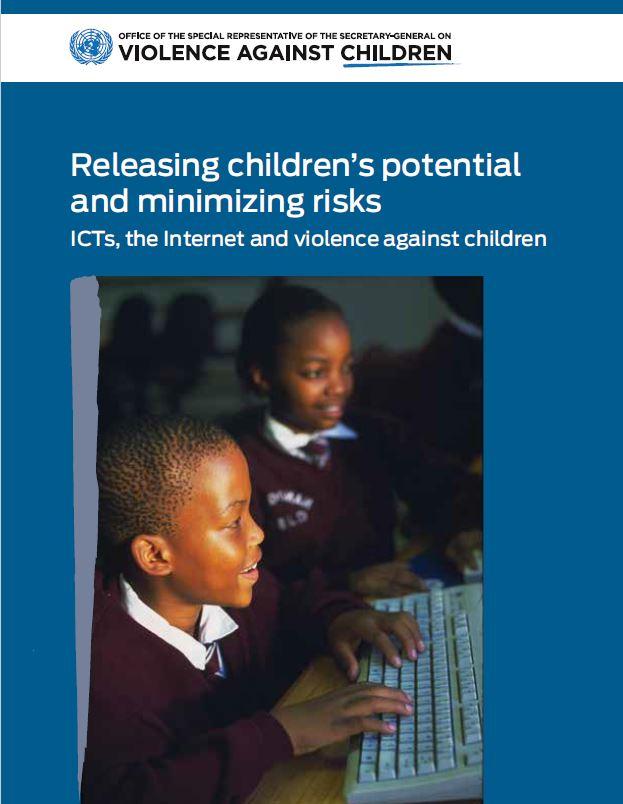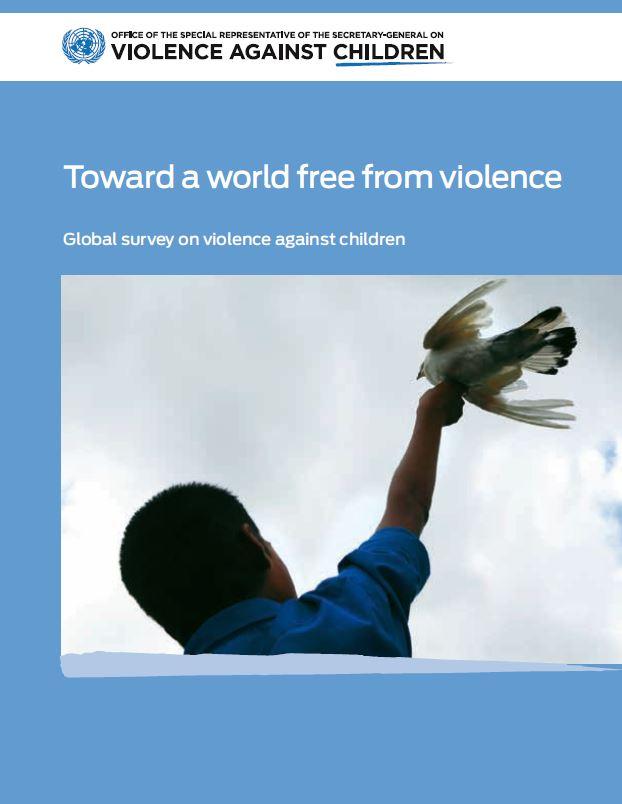Publications
Publications
 |
The private sector and the prevention of violence against children in Latin America and the CaribbeanThe private sector and the prevention of violence against children in Latin America and the Caribbean report presents a set of case studies illustrating how actions by businesses across the region are helping to secure children’s protection from violence, while also pointing out the alarming context of violence against children and adolescents in Latin America and the Caribbean. Our joint publication is a key contribution to the realization of children’s rights and the implementation of the 2030 Sustainable Development Agenda, which has the ambitious vision of a world that invests in its children and safeguards their freedom from violence, abuse and exploitation. This report emphasizes the crucial role that the private sector plays in this new development paradigm. Download the publication Spanish version |
 |
Violence prevention must start in early childhoodEnding violence in children’s lives and investing in early childhood are first and foremost a question of children’s rights, further supported by scientific evidence which shows that a violence-free early childhood matters: the first 1,000 days of a child’s life are the foundation for a person’s whole future development. Violence in early childhood is a stressful, painful experience for a child in the immediate term, with the further risk of midand long-term consequences. The optimum physical, intellectual and socio-emotional potential of children depends on receiving loving care and enjoying a nurturing environment from the very start. Scientific research shows that early childhood stress - including exposure to violence - compromises children’s development, health and education, with long-term negative mental and physiological consequences. Neuroscience advances have vastly increased our understanding of how a child’s early brain development can be impacted by exposure to violence. Violence can alter the developing brain’s structure and function which can impact language acquisition and cognitive functioning, resulting in social and emotional competency deficits and generating fear, anxiety, depression and the risk of self-harm and aggressive behaviour. Download the publication Spanish version |
 |
Celebrating childhood: A journey to end violence against childrenThis book is about what ending violence against children takes, means and brings. It’s a celebration of childhood and a manifesto for a world where children can grow with dignity and free from violence. Download the publication |
 |
Ending the torment: tackling bullying from schoolyard to cyberspaceBullying, including cyberbullying, affects a high percentage of children at different stages of their development, often severely undermining their health, emotional wellbeing and school performance. Victims may suffer sleep disorders, headaches, stomach pain, poor appetite and fatigue as well as feelings of low-self-esteem, anxiety, depression, shame and at times suicidal thoughts; these are psychological and emotional scars that may persist into adult life. Bullying is a key concern for children. It is one of the most frequent reasons why children call a helpline. It gains centre stage in surveys conducted with school children, and generates a special interest when opinion polls are conducted through social media with young people. Download the publication Spanish version French version |
 |
Protecting children affected by armed violence in the communityArmed violence in the community compromises children’s rights and is associated with serious risks for their development and safety, causing children to be injured, disabled, traumatized, exploited, orphaned, imprisoned and at times killed. Living in a community affected by armed violence has consequences for children who are targeted as well as those who witness or feel threatened by such an environment. Armed violence disrupts social harmony and family life, interrupts schooling, compromises health care, undermines economic development and generates fear which limits children’s ability to move freely, participate in the life of their community, enjoy childhood and develop as empowered citizens. Download the publication Spanish version |
 |
Safeguarding the rights of girls in the criminal justice systemGirls often face significant barriers to accessing justice, whether they are victims of crime, witnesses or alleged o"enders. All too often, legislation and criminal, administrative and civil proceedings are inadequate for the safeguarding of their rights, while appropriate policies for heir protection are absent or poorly implemented. In short, as a consequence of their age and gender, girls face a double challenge when they come in contact with criminal justice systems, a challenge rooted in discriminatory attitudes and perceptions that persist in societies around the world. Download the publication |
 |
Why Children’s Protection from Violence should be at the Heart of the Post-2015 Development Agenda - A Review of Consultations on the Post-2015 Development AgendaIn 2014 the world celebrated the 25th Anniversary of the Convention of the Rights of the Child. As United Nations Member States intensify their efforts to agree on the next generation development framework, we have a golden opportunity to tackle violence against children. In recent consultations around the world, organized to help inform the post-2015 agenda, violence was recognized both as a human rights violation in itself and as a major barrier to progress in education, health and other development goals. Stakeholders highlighted children’s particular vulnerability to poverty and violence, and the message was clear - violence must end! Download the publication |
 |
Releasing Children's Potential and Minimizing Risks - ICTs, the Internet and Violence against ChildrenInformation and communication technologies (ICTs) are developing ever more rapidly, with profound effects upon societies around the world. They bring with them enormous benefits and opportunities, most especially by facilitating access to the Internet. ICTs are creating new ways of communicating, learning, delivering services and doing business. For children and youth, who are often particularly adept at harnessing the potential of these technologies, ICTs and the Internet represent an important opportunity for empowerment and engagement, offering new means of experiencing creative processes, communication, social interaction, entertainment and learning. Children are not simply passive recipients of information; they are also engaged participants and actors in the online world. Download the publication |
 |
Toward a world free from violence - Global survey on violence against childrenAs underlined in this Global Survey, violence against girls and boys cuts across boundaries of age, race, culture, wealth and geography. It takes place in the home, on the streets, in schools, in the workplace, in detention centres and in institutions for the care of children. For countless girls and boys the world over, childhood is described by one word: fear.institutional response. The Report’s findings and recommendations point the way towards a future in which children are able to grow up well-nourished, in good health, well-educated, resilient and free from violence. We owe a childhood without fear to each and every one of our children. Download the global survey Spanish version |
 |
Promoting Restorative Justice for ChildrenToday, more than 1 million children are deprived of their liberty worldwide, and countless children face violent and degrading treatment throughout the criminal justice process. In light of this dramatic situation, it is imperative to promote strategies that provide an alternative to detention and custodial sentences for children. This report examines the potential of restorative justice programmes to facilitate conflict resolution and provide appropriate protection to children. This applies to the justice system, whether children are victims, offenders or witnesses, but it also applies in a range of other contexts, including at school, in residential care units, in social welfare settings and in the community. Download the publication Spanish version |

